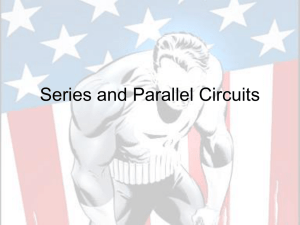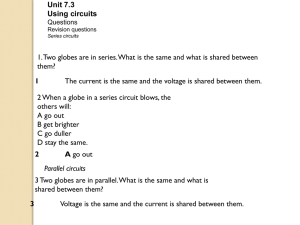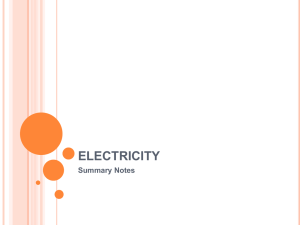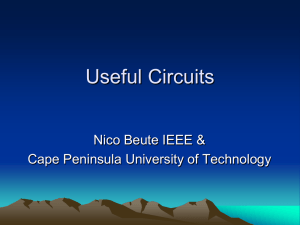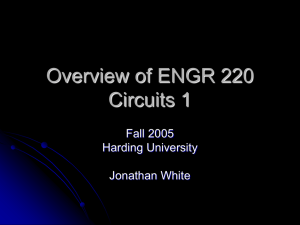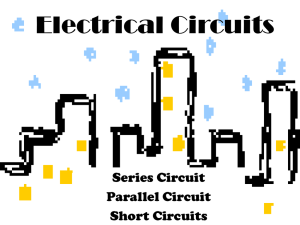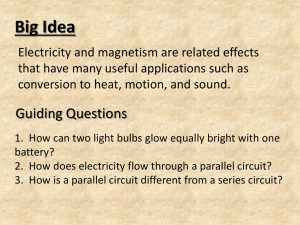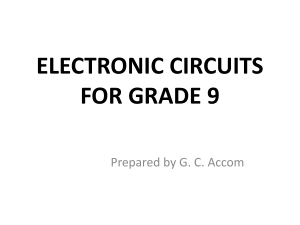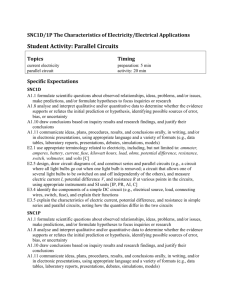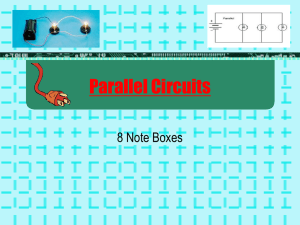Circuits
advertisement
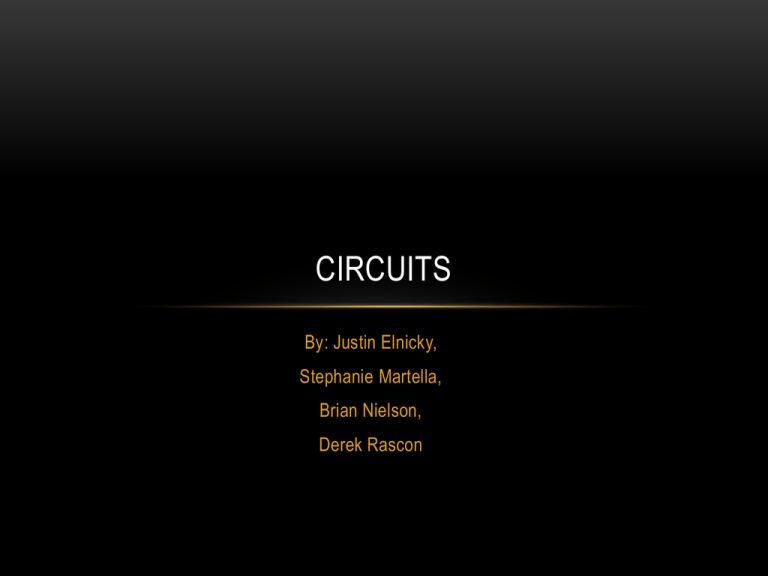
CIRCUITS By: Justin Elnicky, Stephanie Martella, Brian Nielson, Derek Rascon TEXTING POLL • http://www.polleverywhere.com/multiple_choice_polls/LTE1OTQwOTQxOTg EXPLANATION OF A CIRCUIT • Any complete path along which electric charge can flow. DIFFERENT TYPES OF CIRCUITS • Series Circuit- Electric circuit with devices connected in such a way that the electric current through each of them is the same. • Parallel Circuit- Electric circuit with two or more devices connected in such a way that the same voltage acts across each one and any single one completes the circuit independently of the others. SERIES CIRCUIT • In a series circuit the current of electricity is stopped when one of the bulbs in the circuit dies or the switch is opened. • This happens because the electricity can no longer continue to flow in a current. PROS AND CONS OF SERIES CIRCUITS • Pros • They are simpler circuit to make. • They use less energy than a parallel circuit. • You can add power to their input and increase their voltage . • Cons • If one bulb in a circuit goes out or dies, then the rest of the bulbs go out. PARALLEL CIRCUIT • A parallel circuit is organized in a way that when one bulb dies the other(s) do not. • Ex.. When one of the head lights on your car dies the other keeps working. PROS AND CONS OF PARALLEL CIRCUIT • Pros • If one bulb dies the rest of the bulbs stay lit. • It can power many light sources giving all of them their required voltage. • Cons • Can receive damage if the voltage gets too low. EVERYDAY USES OF CIRCUITS • There are circuits in nearly everything that we use that deals with electricity. • Lights in our houses. • Appliances • Christmas lights and headlights in our cars. CONCLUSION • Circuits are important in our daily lives. • Each different circuit has it’s good and bad side. • In most cases, parallel circuits are more commonly used.





